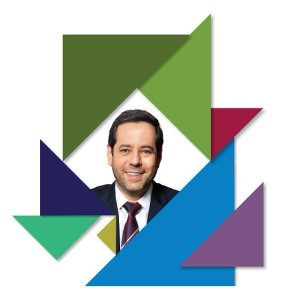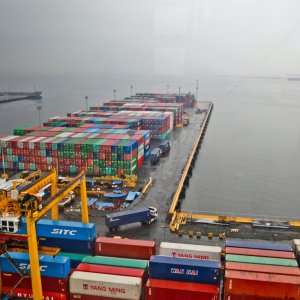
National Pharmaceutical Policy Aims to Solve Supply Gaps
 By Miriam Bello | Senior Journalist and Industry Analyst -
Wed, 06/30/2021 - 14:20
By Miriam Bello | Senior Journalist and Industry Analyst -
Wed, 06/30/2021 - 14:20
Changes to medicine supply mechanisms have been a constant of President Andrés Manuel López Obrador’s administration. To date, the government has significantly changed the supply system twice, leading to medicine shortages and impacting the pharmaceutical industry established in Mexico. As the current medicine acquisition system continues to reveal failures, authorities have suggested a National Pharmaceutical Policy to support equitable access to medicines for Mexicans.
The first major change to the medicine acquisition system implemented by the current administration involved a consolidated purchasing model that would centralize the purchase process. The move was meant to bring savings and support the current federal administration’s austerity and anti-corruption policies. The administration had indicated that a small number of distributors (not laboratories) were responsible for the sale of 70 percent of the medicines purchased by the public sector. Therefore, the federal government removed distribution companies, (which were in charge of consolidating the supplies of different laboratories and distributing the drugs, so the price of the medicines included services, logistics and financing) from the drug purchasing process. Through the new system, each public institution and state had to send their own orders, while the procedure used between 2013 and 2018 allowed IMSS to buy medicines for all its units, as well as for ISSSTE, Pemex, Sedena, Semar and the health institutions of 22 states.
Rafael Gual, Director General of CANIFARMA, told MBN that the 2013-2018 system had brought great advantages for the healthcare sector and was supported by the OECD and several other observers. The old system was also continuously revised and improved through the implementation of consolidated bids, which included different mechanisms that increased competitiveness in the market year after year.
The new purchasing scheme had little impact during the first half of 2019, reports El Economista, as the supply demands of each public institution were meet by IMSS’s last group purchase in 2018. However, the bidding process for drug purchases for the second half of 2019, completed on June 30, 2019, led to several problems, according to a study made by Impunidad Cero y Justicia Justa. According to their report, only 16 of the 36 drugs needed for the treatment of cancer in children and adolescents were purchased. Among those missing were methotrexate and vincristine, which are used to treat some types of leukemia. The lack of the latter medicine led parents of children with cancer to protest the lack of medicines in Mexico City, Puebla, Veracruz, Jalisco, Merida, among other states.
Supply problems continue and so do protests. Today, protest escalated after Deputy Minister of Health Hugo Lopez-Gatell attempted to discredit the protest by linking it to a coup d'état, saying “this idea of children with cancer who do not have drugs, we see it more and more positioned, more like a campaign… of international right-wing groups that are looking for a wave of sympathy from the Mexican citizens, already with an almost coup vision."
The second significant change to purchasing schemes came when the government decided to integrate UNOPS into the acquisition process and made INSABI the main purchaser and distributor of medicines for 2021-2024. This new acquisition process was set to begin on October 2020 but its start was delayed until December 2020. While UNOPS is in charge of acquisitions, the government assigned BIRMEX to manage the logistics involved. BIRMEX is a mainly state-owned company that develops, produces, imports and markets vaccines and antivenoms.
According to Gual, the process lacks adequate planning and transparency, since even though it formally began in August 2020, when the agreement was signed, it was not until December that the first bid for patented, single-source products for the first months of 2021 was carried out.
There is consensus in Congress urging INSABI and UNOPS to report how this serious situation will be remedied, added Gual. “The first adjudications for these 381 pharmaceutical items were awarded in February 2021 and the first contracts were signed in March, with some still pending.” He explained that the remaining 1,600 pharmaceutical items, of which 1,183 are medicines, would be acquired starting in March.
But after more than three months, UNOPS sent individual communications on May 25 to the companies to inform them of their assignments, said Gual. “However, these notification letters state that the information was not legally binding, so they should not start any manufacturing process until there was a contract between the parties.” More than four months after the submission of bids, UNOPS has not yet issued a decision.
As a result, UNOPS sent a communication to INSABI in June informing that 653 items were not quoted and it was unable to acquire them, which represents 55 percent of the total supplies to be procured. To address this serious situation, INSABI requested quotes for 675 items on June 10 and set a 24-hours deadline. To date, the outcome of the exercise is unknown and the problem has been compounded by INSABI's large debt to the industry, which amounts to more than MX$3 billion (US$150 million) from unpaid contracts between 2018 and 2021.
Amidst this supply crisis, the General Health Council of Mexico assembled all the government, academic and industry agencies involved in the Mexican pharmaceutical industry to establish the National Pharmaceutical Policy (PNF). Deyanira Chiñas, Commercial Director of T5DC, shared with MBN that through this forum authorities, companies and institutions “will be able to define a national strategy with all sectors involved so that, at last, we can express and establish mid and long-term goals to meet the national development plan 2019-2024, and provide free healthcare, including medications, healing products and clinical analysis.”
















